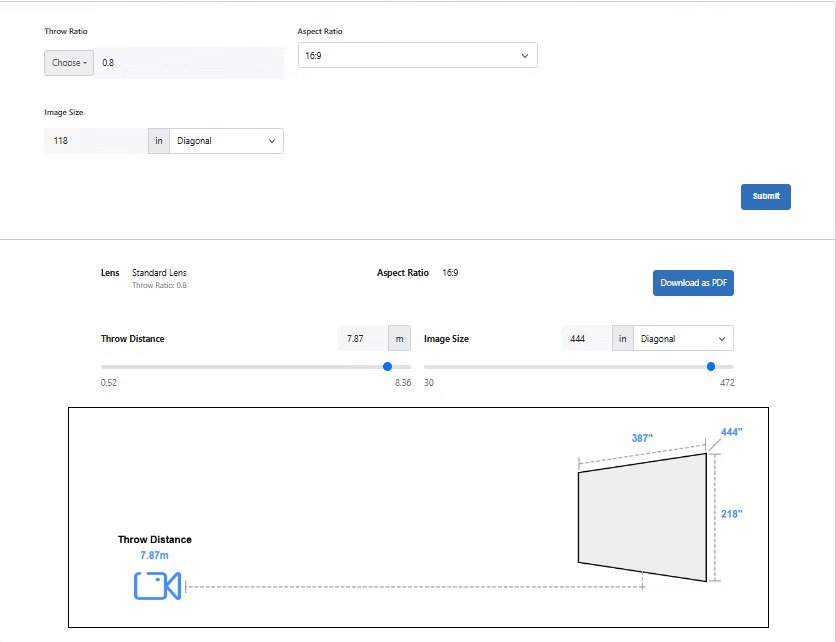Creating the perfect home theater experience is not just about buying the most advanced projector or the biggest screen. The layout of your room plays an equally crucial role in determining how immersive your viewing experience will be. Whether you are setting up a dedicated theater room or converting a section of your living space into a mini cinema, your room layout directly influences image clarity, sound quality, and overall comfort. Understanding the best room layouts for a Home Theater Projector Setup will help you make the most of your investment and turn your home into a true entertainment hub.
Understanding Room Dynamics
Every room has its unique dimensions, light sources, and acoustic properties. Before choosing a projector or deciding on furniture placement, you must evaluate your room’s structure. A rectangular room is typically ideal because it allows better screen positioning and controlled sound reflection. Square rooms can create audio challenges due to standing waves that affect sound quality.
The size of the room also determines the optimal throw distance. This is the space between your projector and the screen. Knowing this distance helps you decide whether a short throw or a long throw projector suits your needs. XTEN-AV’s intuitive design tools can assist in calculating this accurately, ensuring that your setup achieves perfect focus and image proportions.
Ideal Screen Position
The screen should be placed on a wall that can easily be darkened to minimize light reflection. Ideally, it should be opposite to any major light source such as windows or lamps. The height of the screen should be such that the bottom third aligns with your seated eye level. This ensures comfortable viewing without neck strain.
If you plan to use a motorized screen, make sure it can drop down to a position that matches your seated line of sight. Fixed-frame screens are great for permanent setups, while retractable options work well for multi-purpose rooms.
Projector Placement and Throw Distance
When planning your Home Theater Projector Setup, projector placement is vital. Ceiling mounting is often the best choice as it saves space and ensures a clean, professional look. The mount distance must correspond to the throw ratio of your projector. For example, a projector with a 1.5:1 throw ratio requires 1.5 feet of distance for every foot of screen width.
Short throw and ultra-short throw projectors are excellent for smaller rooms, as they can produce large images even when placed close to the wall. However, for large dedicated theaters, long throw projectors often deliver better light uniformity and focus across the entire screen.
Seating Arrangement and Viewing Angles
Your seating should be positioned at a distance that provides a full view of the screen without eye strain. As a general rule, the ideal viewing distance is 1.5 to 2.5 times the screen’s diagonal size. For example, if your screen measures 100 inches diagonally, your seats should be placed between 12 to 20 feet away.
The horizontal viewing angle is also important. The seats should face directly toward the screen, avoiding extreme side angles that distort perspective. If you have multiple rows, ensure that each row’s eye line clears the one in front, possibly by adding risers for the back seats.
Lighting Control and Ambiance
Controlling ambient light is crucial for achieving deep contrast and vibrant colors. Rooms with fewer windows are easier to manage, but if you have a multipurpose room with natural light, consider using blackout curtains or shades. Dimmable lighting options also help create a theater-like environment.
Accent lighting, such as LED strips along the floor or ceiling, can add style without causing glare. The idea is to maintain sufficient light for safe movement without interfering with the projected image.
Sound Layout and Acoustic Balance
While the projector and screen form the visual core of your setup, sound completes the experience. For a true cinematic atmosphere, position your speakers based on the layout of your room. In most home theaters, a 5.1 or 7.1 surround system provides an immersive sound field. techners
Place the front left, center, and right speakers around the screen area, with the subwoofer near the front or side wall. The surround speakers should be at ear level or slightly above, placed to the sides or behind the seating area. Use acoustic panels or thick curtains to control sound reflections and prevent echo.
Choosing the Right Layout Type
1. Dedicated Home Theater Room
This is the best option for enthusiasts who want a true cinema feel. A dedicated room allows you to control light, sound, and seating completely. With proper soundproofing, wall treatments, and furniture placement, you can achieve a professional-grade theater experience.
2. Living Room Theater Setup
If you lack a separate room, a living room setup can still deliver excellent results. Choose an ultra-short throw projector and retractable screen to save space. Arrange seating directly opposite the screen and use smart lighting to create a theater-like ambiance.
3. Bedroom Theater Setup
For smaller spaces or personal viewing, projectors designed for short throw distances are ideal. You can mount the projector near the headboard or ceiling. A smaller screen and cozy seating can turn your bedroom into a private movie retreat.
Cable Management and Aesthetic Design
Neat cable management not only enhances aesthetics but also ensures safety and convenience. Use in-wall conduits or raceways to conceal wires. Ceiling mounts and stands should have integrated cable channels for a clean look.
Additionally, align your furniture and décor to complement the setup. Dark-colored walls, minimal reflections, and soft furnishings can all improve both visuals and acoustics.
Common Mistakes to Avoid
When setting up your Home Theater Projector Setup, avoid placing the projector off-center as it can cause keystone distortion. Similarly, incorrect screen height or seat distance can lead to discomfort and reduced immersion. Make sure ventilation is adequate around your projector to prevent overheating.
Final Thoughts
Designing the best room layout for your projector setup requires a balance of technical precision and aesthetic design. Factors such as throw distance, seating, lighting, and acoustics all contribute to creating a captivating cinematic experience.
By using expert tools like those from XTEN-AV, you can simplify planning and ensure professional accuracy in every aspect of your setup. Whether you are building a dedicated theater or a simple living room system, proper layout design ensures you get the most out of your investment and enjoy a truly immersive viewing experience.











Leave a Reply